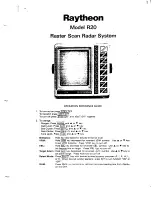
Exalt Installation and Management Guide
ExtendAir (TDD) Series
6
203591-004
2010-09-20
Pre-installation Tasks
This section describes the steps necessary to prepare a site for the installation of the Exalt Digital
Microwave Radio.
Link Engineering and Site Planning
Design all terrestrial wireless links prior to purchase and installation. Generally, professional wireless
engineering personnel are engaged to determine the viability and requirements for a well-engineered
link to meet the users’ needs for performance and reliability.
Please use the
ExaltCalc
path calculator, which aids in the pre-planning and engineering required to
determine following attributes::
•
Antenna type gain at each end of the link
•
Antenna mounting height/location for proper path clearance
•
Antenna polarization orientation
•
RF cabling type, length, connectors, route, and mounting
•
Antenna system grounding
•
Lightning arrestor type(s), location(s), and grounding
•
Radio mounting location and mechanisms
•
Radio grounding
•
Radio transmitter output power setting
•
Anticipated received signal level (RSL) at each end
•
Anticipated fade margin and availability performance at each end
•
Radio settings for TDD frame length and occupied bandwidth
•
Anticipated throughput performance (TDM circuit support and Ethernet)
•
Anticipated system latency
With respect to radio path and site planning, these radios are generally identical to other microwave
terrestrial wireless systems. Engineering of these systems requires specific knowledge about the
radios, including:
•
RF specifications (transmitter output power, receiver threshold, occupied channel bandwidth, and
carrier-to-interference to erance)
•
Regulatory limitations on transmitter output power setting and antenna type/gain
•
Noise/interference profile for the intended location
Familiarization with the ExtendAir (TDD) Series Radios
The ExtendAir (TDD) Series radios utilize time division duplex (TDD) radio transmission. This means
that the transmitted signal in both directions uses the same center frequency and transmits in one
direction for a period of time, and then in the opposite direction for another period of time. This total
period of time is referred to as the
frame length
or
TDD frame length
, and is further discussed in















































